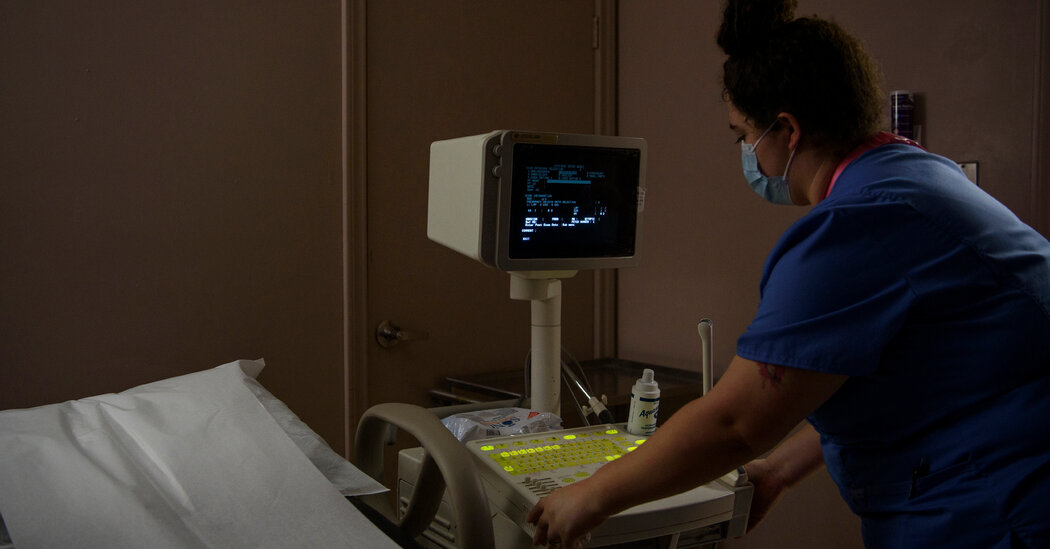For more than a year, since the U.S. Supreme Court’s decision overturning Roe v. Wade, pregnant women have faced a radically altered landscape of challenges and choices as the number of abortion providers dropped to zero in more than a dozen states.
But the precise impact of the decision has been difficult for researchers to measure directly, particularly when it comes to a central question: How many more babies are born as a result of abortion bans?
On Thursday, researchers from Johns Hopkins University’s Bloomberg School of Public Health published one of the first serious attempts at an answer. They focused on Texas, where a law that took effect in September 2021, nine months before the court’s Dobbs decision, effectively banned abortion at six weeks. The analysis found that the state had nearly 10,000 more births between April and December of last year than would have been expected without the law, or 3 percent more.
The finding, which cheered abortion opponents, could suggest a striking number of pregnancies carried to term that otherwise might not have been, absent the law known as Senate Bill 8.
Researchers watching the new abortion bans around the country have expected a resultant rise in births, but perhaps not one so large.
“It looks like they have demonstrated that births increased more in Texas than we would have expected,” said Caitlin Myers, a professor of economics at Middlebury College who studies abortion but did not participate in the study. “The inference I’m less comfortable making at this point is that all of those excess births are because of S.B. 8. Some of it may be, but I don’t think all of it will be. It’s just too high.”
The authors of the study, which was published as a two-page research letter in the Journal of the American Medical Association, also stopped short of attributing their estimated increase in births solely to the unusual law, which allows for civil lawsuits against those who aid abortions after the onset of fetal cardiac activity, usually around six weeks. The results at least suggested that “not everyone who might have received an abortion in the absence of S.B. 8 was able to obtain one,” they wrote.
Still, the authors were confident in their methods and results.
“This pattern was unique to Texas,” said Alison Gemmill, a professor at Johns Hopkins Bloomberg School of Public Health and one of the researchers on the study. She said the team looked at each of the other 49 states and Washington, D.C., but found no evidence of differences from expected birth counts. If there were other explanations for the increase, she added, they would have to be unique to Texas and to the time after the S.B. 8 abortion law went into effect.
Quantifying the effect of abortion bans has been difficult for researchers because of a lag in obtaining detailed data about births.
In other states where abortion bans went into force after the Dobbs decision in June 2022, researchers are still collecting vital statistics in order to study the effect of new prohibitions on births. Expectations have been that those bans would have an even greater effect on those seeking abortions than the S.B. 8 law did in Texas, because many of them prohibited all abortions and were adopted in a large number of contiguous states, making it difficult for women to travel to other states for procedures.
The study published on Thursday, which looked at data back to 2016, relied on provisional birth data for 2022 because fuller data was not available. It did not include demographic information such as the mother’s age or race that could be compared to prior years and used to understand other factors that may have played a role.
The researchers then created a statistical model of what Texas would have looked like without the abortion law. With that, they were able to estimate the number of births that would have taken place in that case.
“This is an indirect way of measuring what we can’t measure,” Ms. Gemmill said. “We don’t know the decisions behind whether people sought abortions, or whether they weren’t able to.”
Broader changes in birthrates have complicated researchers’ efforts. The number of births has been lower in recent years in Texas, and across the United States, a trend that was exacerbated at the height of the Covid emergency. But there has been a rise in births since the pandemic in Texas: There were around 389,000 births last year, down from 398,000 in 2016, but larger than the number recorded in 2020.
Other factors may have led to higher birth trends during that time period, Ms. Myers said, including a rise in the number of foreign-born mothers giving birth, many of them in Texas. Ms. Gemmill said that factor was hard to measure without detailed demographic data on births in 2022.
Despite the new restrictions under S.B. 8, many Texas women still obtained abortions, either by having them before the six-week cutoff, by traveling out of state for their procedures or by taking abortion medications on their own. Texas has seen a flood of mail-order pills, and some Texans have been able to get abortions in Mexico.
Still, anti-abortion activists took the Johns Hopkins study as evidence that their success at severely limiting abortions in Texas had produced the desired effect: more pregnancies carried to term.
“Every baby saved from elective abortion should be celebrated!” John Seago, the president of Texas Right to Life, said in a statement. “This new study highlights the significant success of our movement in the last two years, and we look forward to helping the mothers and families of our state care for their children.”


